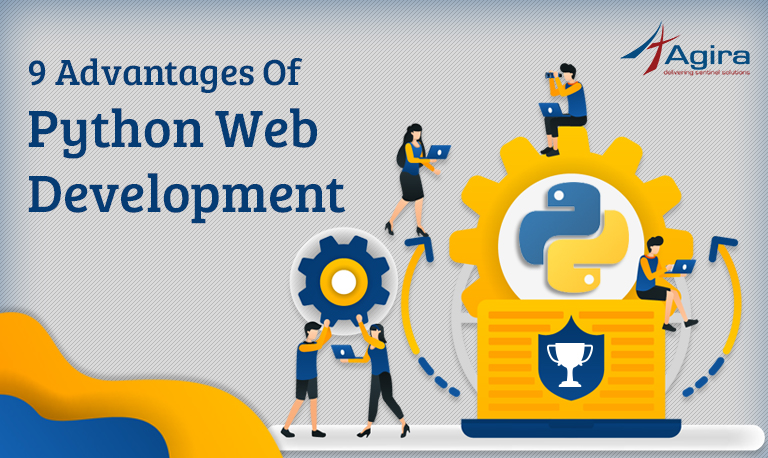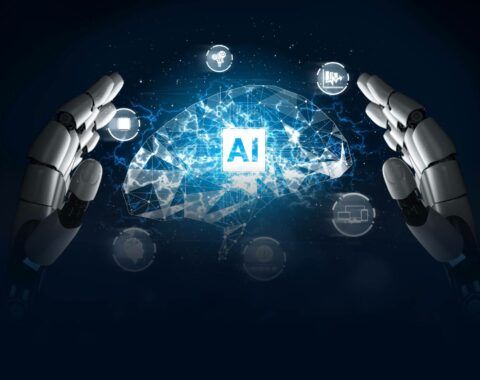Python is one of the top high-level programming languages that has been in the tech industry for a long period. Most developers call Python as a programming language that never dies. One of the main reasons for its fastest and never stopping growth is its ability to excel in different domains. Let’s explore the main Python applications and uses trending today.
According to GitHub, Python is one of the fastest-growing programming languages in its yearly report called the state of Octoverse. This report is a solid proxy for major tech trends in industry as GitHub is prominent over Silicon Valley.
There is no surprise in the fame of Python because it is easy to learn, read and write. One of the other important reasons for the popularity of Python is its mindful community. Also, Python is used everywhere from tech giants such as Google, Youtube, and Instagram to a small raspberry pi electronic gadget. So here is the list of the industries that make optimal use of Python and benefit the most.
1. Web Development
Python for web development is the most commonly known in the tech market for the efficiency of its web applications built in it. Many different advantages come with Python web development that is beneficial for both developers as well as entrepreneurs. Python supports the latest trends in web applications such as PWAs, integrated animations, and other impressive features.
When it comes to Python web development, its wonderful web frameworks take credits such as Django, Flask, and others.
Read the top 9 reasons why Python is the best choice when it comes to web development here.
2. Internet of things
As already mentioned above, Python can make a small piece of object into a working electronic gadget with the help of Raspberry Pi. The world is now moving to smart homes, which means you can move your curtains with just a click from your mobile phone. The internet of Things is the technology behind smart homes. Internet of Things can be perceived differently for different industries.
For instance, you can consider large scale industries such as logistics where the shipment containers can be tracked automatically with IoT.
Why should you choose Python for IoT?
IoT involves wireless sensor networks, real-time data analytics, cyber-physical systems, big data, and machine learning. Python ideally excels in all the above, so it is preferable for IoT development.
- There are many tools available in Python for the Internet Of Things such as Raspberry Pi, MicroPython, Zerynth and Home Assistant
- Python is a portable and embeddable language which lays the strong and ideal foundation for IoT development
- Despite this, Python also plays a significant role in the development of IoT technology.
If you want to choose a language that is quick and easy for IoT development, you would obviously end up picking Python.
3. Machine Learning and Artificial Intelligence
With the ever-increasing growth curve of machine learning, you can assure that it will hold the future. From anything to everything can be personalized with the efficiency of Machine learning.
The above report given by the economist shows the increased number of Python users in recent times. In the graph, already existing 26% use Python for web development while the significantly growing ramp shows the 37% increasing users of Python for IoT, data science, and AI development.
Smart developers always prefer Python for machine learning due to its innumerable benefits. Python’s resourceful libraries are one of the main reasons to choose Python for ML or deep learning. Also, Python’s data handling capacity is great despite its speed.
Reasons Why Python is good for Machine Learning and Artificial Intelligence?
- Python has the most efficient libraries for machine learning such as Scikit-learn, TensonFlow, nilearn, mlpy. These libraries can do a lot of things that can solve most of the machine learning challenges. Most popular AI-based libraries are NumPy, Theano, keras, and NLTK.
- Supporting libraries, reinforcing frameworks, simple syntax, an abundance of support community and the package of everything with simplicity.
- Enhanced readability and visualization options
- Also, Python provides you an independent platform with a low entry barrier.
Being very supportive to ML and AI, Python is now getting more traction from other industries such as travel, Fintech, transportation, and healthcare.
4. Data sciences
The renowned data analyst Nick Kolakowski says that Python software development is Key to the Future of Data Science. It is said that the burgeoning growth of data sciences is enhancing the developers to learn Python. Python has the top web scraping tools for data scientists to pull data out of HTML and XML files. There are many reasons why data scientists love Python. Some of them listed out here.
Why Python for data science?
- Python has got the best web scraping tools that can convert unstructured into structured data such as LXML, Beautiful Soup, Python requests, Selenium, Scrapy, and others.
- The presence of innumerous libraries for data sciences in Python holds its place stronger for data sciences than ruby and other languages.
- Python lets you to create CSV outputs that are easy to read data.
- Because Python is lightweight and efficient for handling big data. Also, it is multifunctional to support others.
- The all-in-one toolset for handling any powerful functions.
Python’s share has ramped up to 51% to prove its excellence as a data science tool. A report states that 66 out of 100 data scientists use Python and consider it as the best tool for analytics professionals.
5. Fintech
It is one of the major industry than gained a huge hype for the past decade. Python is considered as the primary programming language for Fintech.
Fintech is nothing but the short form for financial technology which has turned our financial transactions more easier with just a click. So, a programming language that is cost-effective, easy to optimize, plan and execute functions of financial services.
The above graph is the report given by the HackerRank which states that Python is the most popular language in use for FinTech firms in the US.
Being a critical industry which involves money loss for a small error, Fintech chooses Python over other languages. So, here are the reasons why Python is the best for Fintech industry.
Advantages of using Python for Fintech
- Simplicity in syntax, with low bug-rates and error rates.
- Loaded with plenty of libraries that are supported by a huge open source community.
- Reliable high performance without compromising on speed.
Many financial organizations like Citigroup are now training their banking analysts with Python coding and programming.
At some point, it is obvious for anyone to choose the simple and easy to use language that can help in collaboration between teams, and has good community support. So, they end up choosing Python.
Get started with your next Python project by hiring the best Python developers in the Industry from Agira technologies.












